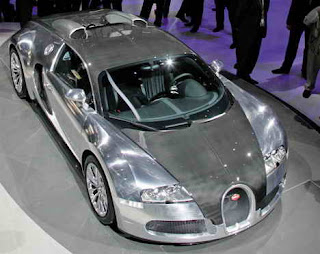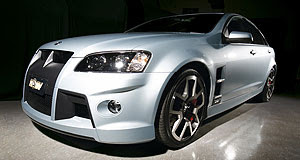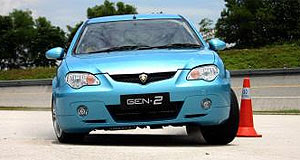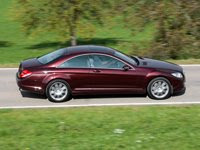BMW wants people to see its new 1-series as the reincarnation of its classic 2002, but in fact the 1-series coupe looks, feels, and drives like a 3-series that's shrunk in the wash. In convertible form, the 1 counters that shrink-wrapped feeling with the expansiveness of an open-air car, and it makes for a highly enjoyable combination.
As with the coupe, the 1-series convertible mirrors the 3-series mechanically. Both cars offer the same two 3.0-liter straight-six engines, available with or without turbos. Either engine can be controlled via a six-speed automatic (with available shift paddles) or a six-speed manual. The smaller car is about 300 pounds lighter, which shaves between 0.1 second and 0.3 second off the 0-to-60-mph time. BMW quotes 6.4/7.0 seconds for the 128i (manual/automatic) and 5.4/5.5 seconds for the 135i.
Like the 3-series, the 1-series is one of the least tortured of BMW's current designs, although it suffers the Z4-style sow's-belly curve along the bottom of the front doors. Still, the 1 and the 3 both work well as convertibles, with fairly upright windshields that keep the A-pillars out of the driver's and front passenger's faces plus a near-horizontal beltline that preserves the view out for rear-seat riders.
Speaking of rear-seat riders, their accommodations are one area where there is an appreciable difference between the 1-series and the larger 3-series. In the smaller car, back-seat space is marginal - the seatback is very upright, legroom disappears if the front seats are pushed back too far, and limited shoulder room forces riders to cozy up to each other whether they want to or not.
The other major difference between the two is their folding tops. Whereas the 3-series has a retractable hard top, the 1-series uses a fabric roof. The cloth top makes for a serious rear-quarter blind spot and is also noisier, but the rushing wind doesn't really get boomy until near 90 mph. We think the fabric roof looks more handsome than the folding hard top (with its cutlines in the roof and along the rear flanks), and it also saves a good 150 pounds or so.
Slide behind the wheel, and you could easily believe you're in a 3-series. The cockpit is slightly narrower (like the 3-series of a dozen years ago), and the interior decor is equivalent, if not identical. This is not some obviously cheapened version, like the old 318ti hatchback. From the fat steering wheel to the gauges to the switchgear - including iDrive, but only if you order navigation - it's all familiar BMW fare.
The shift action and the clutch take-up are sublime, just as they are in so many BMWs. According to project leader Herbert Rauberger, the suspension tuning of the convertible is designed to mirror that of the coupe. In our test car (which was not equipped with the stiffer sport package), we found a pleasant combination of firmness and compliance. The 1-series has near 50/50 front-to-rear weight distribution, which keeps it from being nose-heavy. Handling is clearly biased in favor of grip rather than easy oversteer. It proved to be a highly satisfying setup on the winding roads carved into the edge of the hills north and west of Valencia.
The high-revving six, however, sometimes left us wanting just a bit more, and the good news is that we Americans will get it. Our test car was the European-market 125i, a version that is not coming to the States; its 218 hp is slightly less than our base 128i's 230 hp. Of course, for those who really want more, there's also the 300-hp 135i.

Our 125i also differed from U.S.-bound cars by being equipped with regenerative braking and a deep-cycle battery (which lessen the draw from the alternator) along with closing flaps behind the grille (to aid high-speed aerodynamics when less engine cooling is needed), all elements of BMW's Efficient Dynamics effort to lower fuel consumption. The car also featured electric power steering (as will our 128i), but as much as we're in favor of efficiency, that's one item we'd rather skip. This is one of the better electric-assist systems; it's precise and even provides a measure of steering feel, but it doesn't have the natural build-up of effort that helps make BMW's hydraulic-assist steering so superb. Happily, that system is standard on the 135i - and just as happily, BMW's weirdly nonlinear active steering is relegated to the options list.
Even with electric power steering, the 1-series convertible is easily the best drive in its segment. Provided you don't often carry rear-seat passengers and can live with a fabric roof, it does everything its bigger brother does at a price that's ten grand less. That's a package that fits us just fine.
 new entry-level model line codenamed the RR4, the engineering development program for which is fully underway.
new entry-level model line codenamed the RR4, the engineering development program for which is fully underway. 

































